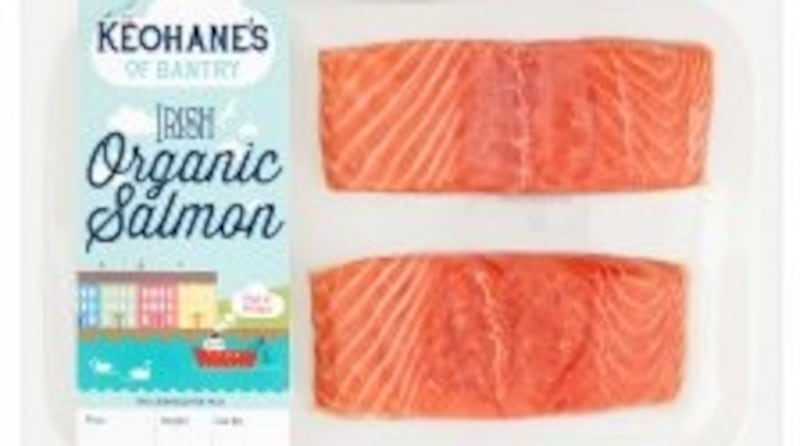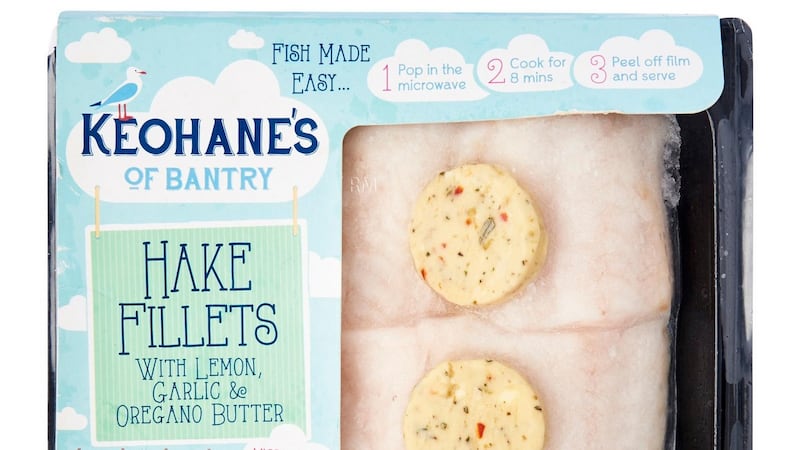For an island nation, we don't eat a lot of fish – though the industry is sizeable, contributing about €1.15 billion to the economy. Ireland's seafood exports are worth about €645 million, but it also imports more than €300 million. There is a wide variety of fish available fresh and consumption is increasing with salmon and cod still the favourites, according to Bord Iascaigh Mhara.
If you don’t pick up the catch of the day at a fish counter, what can the label on chilled fish tell you? The first thing you will notice is the how much farmed salmon is about. This is no accident as the Government is keen to grow the aquaculture industry here.

Keohane's of Bantry's Irish Organic Salmon Darnes, which cost almost €28 a kilo, for example, notes that they have been farmed "off the coast of Ireland". There are about 280 fish farms in Ireland, but it has not been easy for the industry. Recent problems have included swarms of stinger jellyfish and storms depleting Irish stocks. (In Scotland, fish farmers have had to contend with sea lice.)
So a lot of other packets of fish on supermarket shelves with “Packed in Ireland” labels and Irish flags contain fish from overseas.
Surprising
The packets of cheaper chilled salmon products from Tesco show that they have been "farmed in the United Kingdom or Norway". It may seem surprising that they cost almost half the price of the Irish fish at just about €15 a kilo, given that Norway is a very high-cost economy but that country dominates the salmon farming industry. Last year its salmon exports alone were worth about €6 billion and some Norwegian giants even have fish farms here and in Scotland.
Marine Harvest Ireland is one such business. It owns the Irish Atlantic Salmon Company and is the world's largest supplier of farmed Atlantic salmon and Ireland's largest producer of organic Atlantic salmon. The wild salmon season runs from May to August but outside of that it takes farmed salmon to keep the shelves stocked.
White fish tends to come from farther away. Hake fillets from Keohane’s note that they were “caught by trawls in the South East Atlantic” while its cod was caught in “the Barents Sea, Norwegian Sea, Spitzbergen and Bear Island”.

Other cod fillets say they were caught in “N.E.ATL” or the North East Atlantic. It also says “Hake fillets defrosted”, which helps to explain why the old warning not to buy fish on a Monday doesn’t really count any more.
Much of this fish is frozen on trawlers almost immediately after being caught to keep it as fresh as possible. This also explains the why fish can have longer shelf life. The hake fillets here had a “use by” date one week away.
But there is more to labels than provenance and age. Keohane's hake fillets say they are "high in protein". This is a phrase that cannot be used lightly on food and must follow the Food Safety Authority of Ireland guidelines.
Calories
Here’s how it goes: to be labelled as high in protein, at least 20 per cent of the energy value – in other words calories – of the food must come from protein. So even though hake has just 16g of protein in each 100g, it qualifies. Not one I would want to try working out myself.
The salmon packets often say the product is “high in Omega-3”, which is the fish oil credited with helping the brain, cardiovascular system and immune function. That is why we have been advised to eat fish at least once a week.
Researchers at Stirling University in Scotland, however, have said that levels of omega-3 in farmed salmon halved in recent years. Farmed salmon eat a different diet from their cousins in the wild, so some believe that they now have high levels of omega-6, which could be a problem as the modern diet tends to deliver high levels already.
One Tesco packet of cod describes the product as “tender and succulent” which is really up to you to decide.
FOOD LABELS SERIES
1) Being a successful shopper
2) Bread
3) Milk
4) Cereal
5) Rashers
6) Yoghurt
7) Soup
8) Hummus
9) Pasta sauce
10) Chinese ready meals
11) Frozen chips
12) Chilled fish
13) Egg
14) Chicken Kiev
15) Crisps
16) Mayonnaise
17) Baked beans
18) Tomato ketchup
19) Chocolate digestive biscuits










